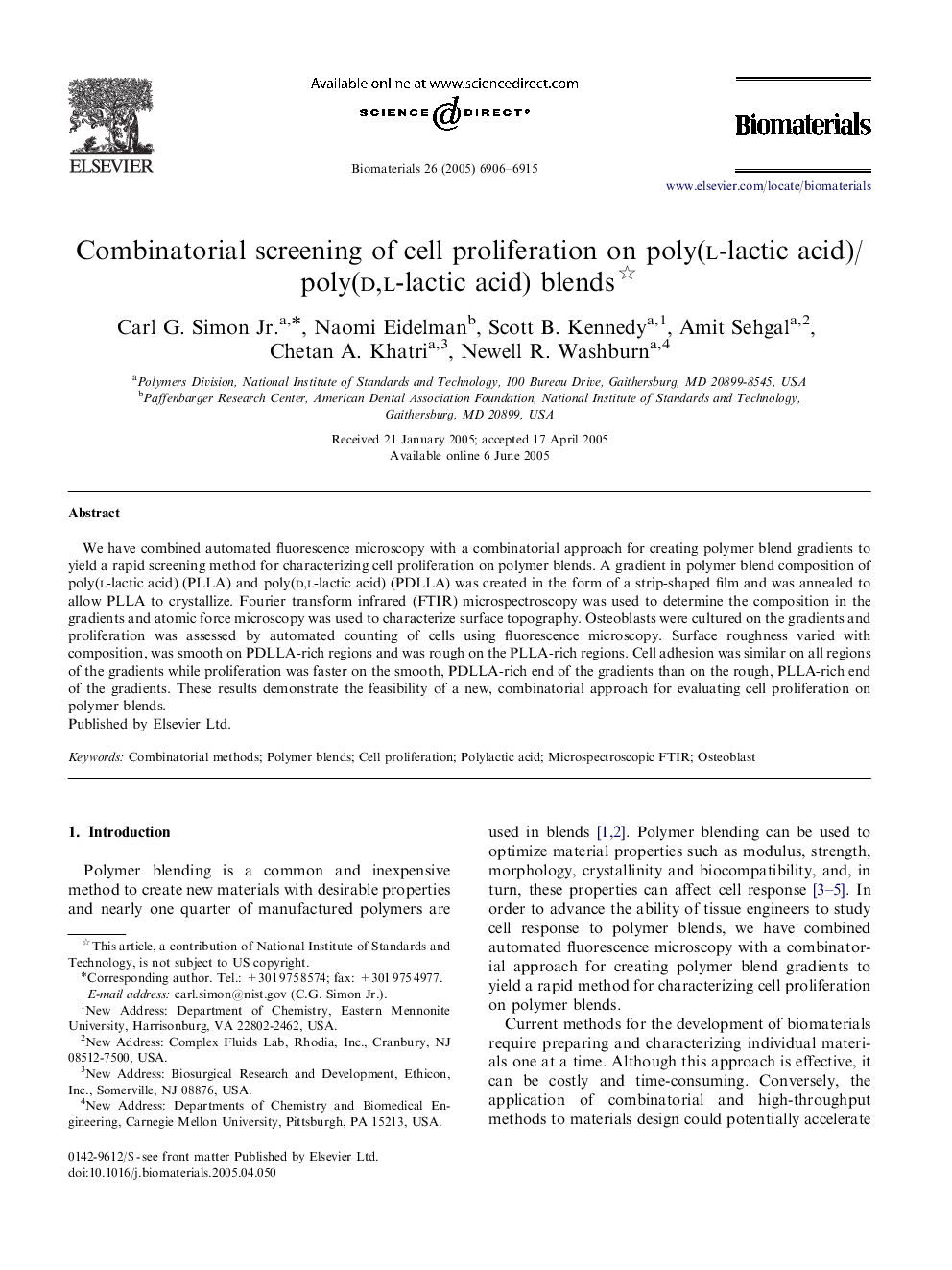| Article ID | Journal | Published Year | Pages | File Type |
|---|---|---|---|---|
| 12448 | Biomaterials | 2005 | 10 Pages |
We have combined automated fluorescence microscopy with a combinatorial approach for creating polymer blend gradients to yield a rapid screening method for characterizing cell proliferation on polymer blends. A gradient in polymer blend composition of poly(l-lactic acid) (PLLA) and poly(d,l-lactic acid) (PDLLA) was created in the form of a strip-shaped film and was annealed to allow PLLA to crystallize. Fourier transform infrared (FTIR) microspectroscopy was used to determine the composition in the gradients and atomic force microscopy was used to characterize surface topography. Osteoblasts were cultured on the gradients and proliferation was assessed by automated counting of cells using fluorescence microscopy. Surface roughness varied with composition, was smooth on PDLLA-rich regions and was rough on the PLLA-rich regions. Cell adhesion was similar on all regions of the gradients while proliferation was faster on the smooth, PDLLA-rich end of the gradients than on the rough, PLLA-rich end of the gradients. These results demonstrate the feasibility of a new, combinatorial approach for evaluating cell proliferation on polymer blends.
